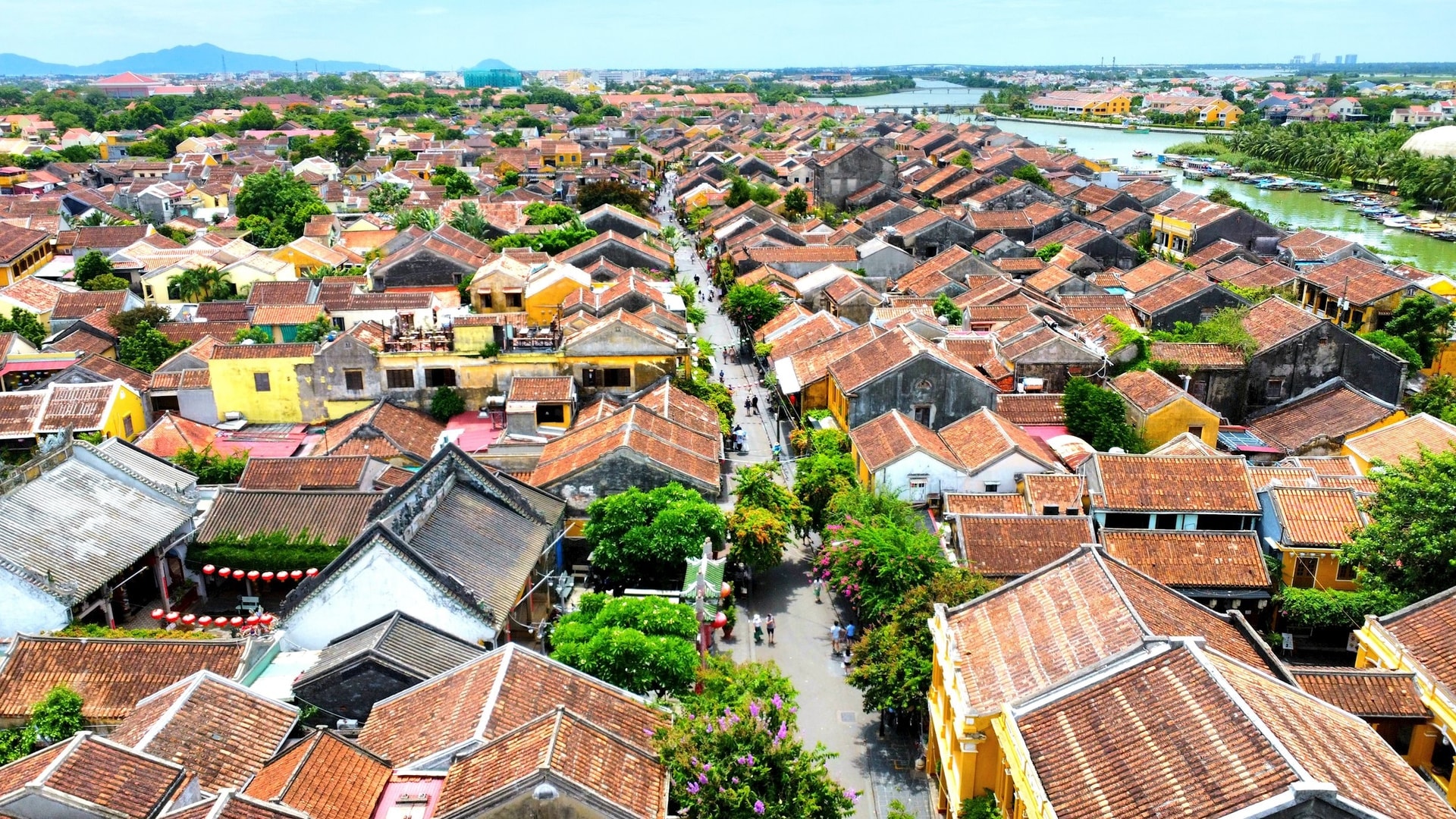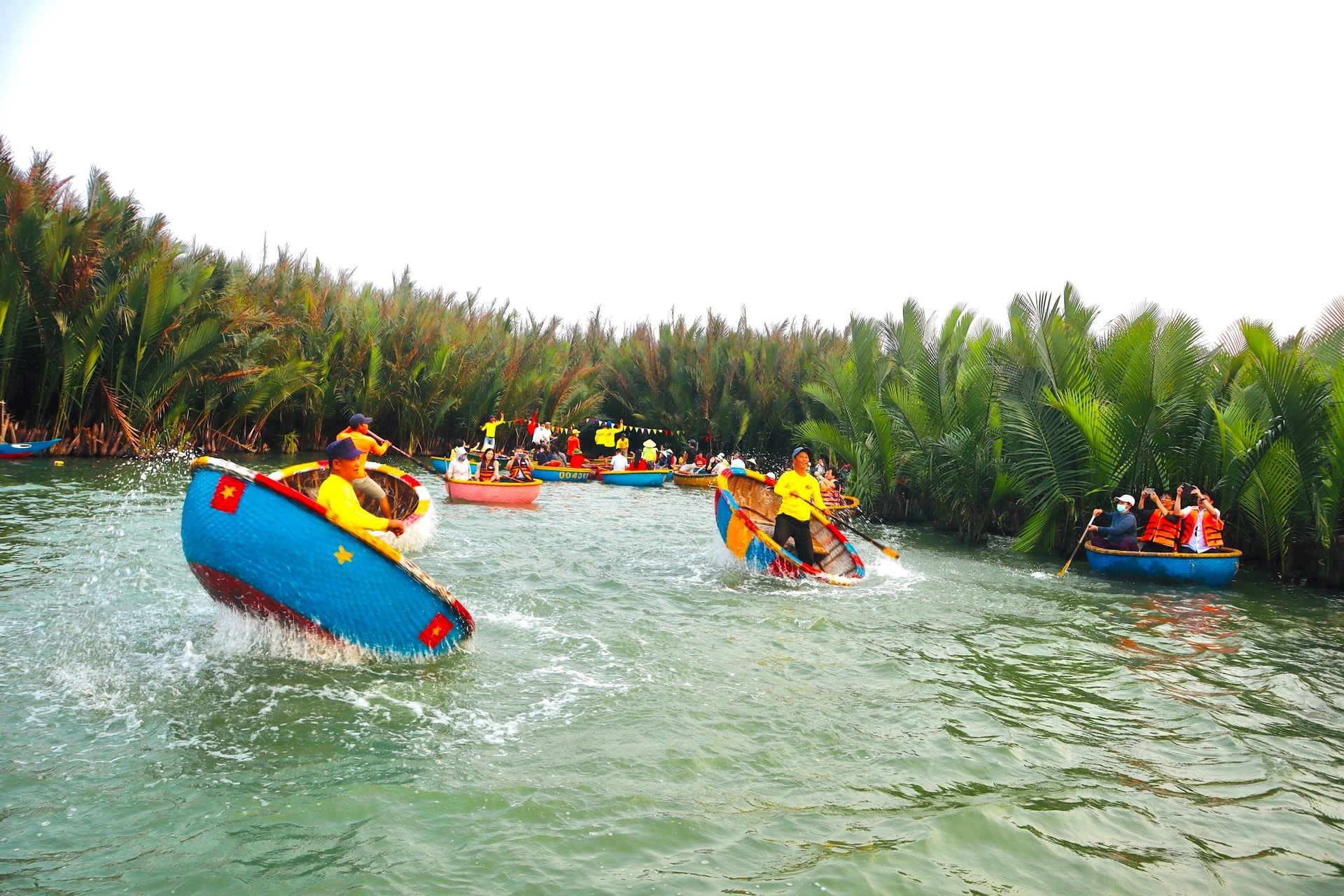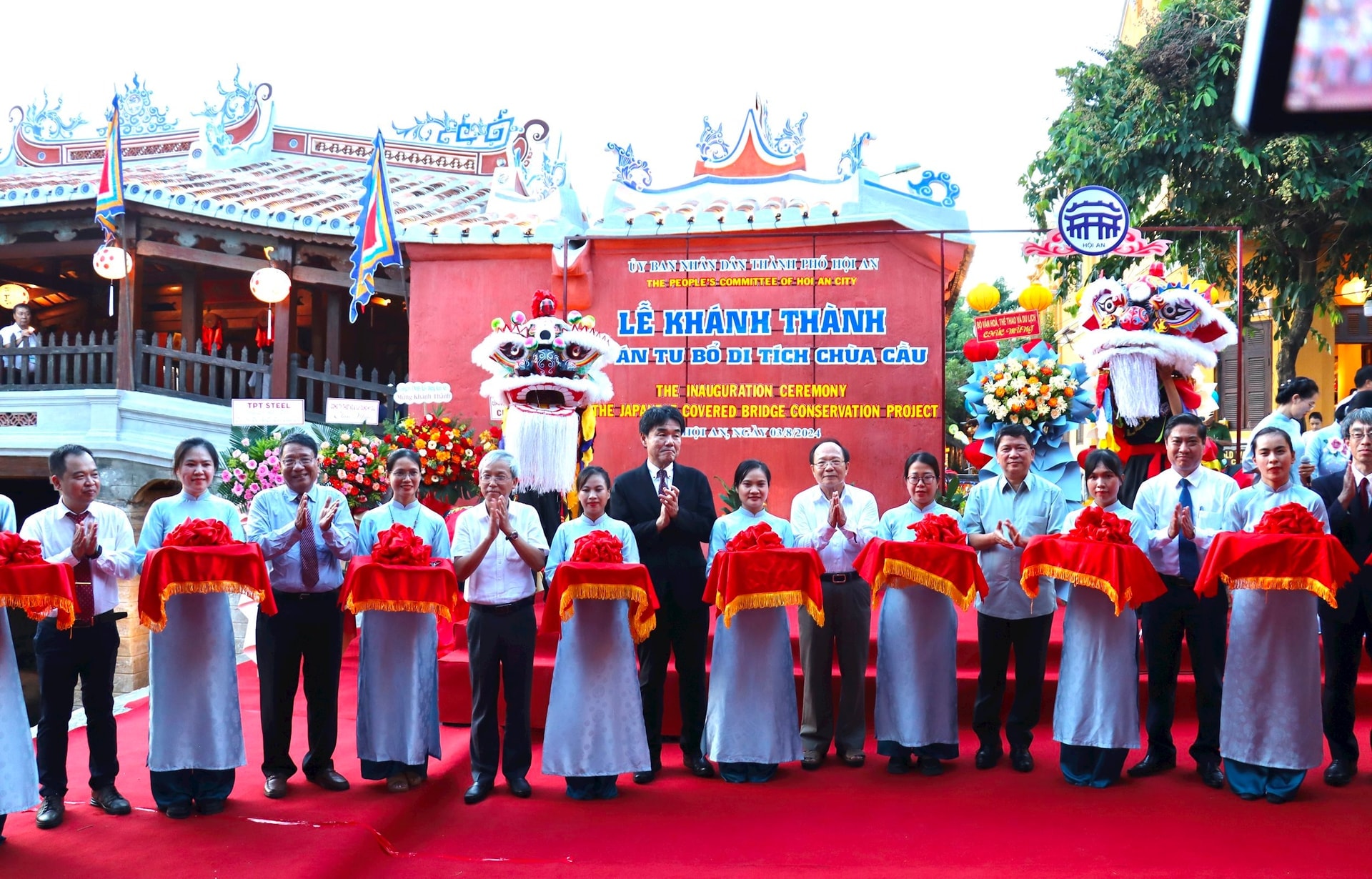
Hoi An ancient town seen from above. Photo: Quoc Tuan
The preservation of Hoi An has been carried out comprehensively, covering both tangible and intangible heritage.
Currently, Hoi An is home to one special national relic, 27 national-level relics, 50 provincial-level relics, and 19 heritage sites listed for protection under the 2024 - 2029 conservation programme.
Adaptive conservation has been actively promoted through various controlled functional transformation models.
Notable examples include the Museum of Traditional Medicine, the Japanese Cultural Space, and the Hoi An Traditional Performing Arts Centre - initiatives that preserve historical values while serving tourism and traditional education purposes.
Particular attention has also been given to preserving traditional craft villages such as Thanh Ha Pottery, Kim Bong Carpentry, and Tra Que Vegetable Village, contributing to economic development alongside the safeguarding of local cultural values.

Tourists watch a basket-shaking performance at the Bay Mau nipa palm forest. Photo: Quoc Tuan
In addition, a digitalisation project of Hoi An’s heritage is being implemented to build an electronic database that supports heritage management and promotion in the digital era.
After 13 years of implementing its master plan, tourism has become Hoi An’s spearhead economic sector.
Between 2012 and June 2025, the city earned 81 tourism awards from prestigious domestic and international organizations.
Revenue from ticket sales to the heritage site has exceeded VND 1.9 trillion (approximately US$75 million).
In 2024 alone, Hoi An welcomed more than 4.42 million visitors, reaffirming the enduring appeal of this UNESCO World Heritage site and its position as one of Vietnam’s most sustainable and attractive tourist destinations.
The Cu Lao Cham - Hoi An World Biosphere Reserve has been strictly managed, ensuring the effective preservation of its natural ecosystems.
It has also become a symbol of the integrated model that combines heritage conservation, ecological protection, and sustainable tourism development.
Hoi An has made significant progress in the preservation and restoration of its ancient town, particularly in saving thousands of old houses from deterioration and loss over time.

Delegates cut the ribbon to inaugurate the project to restore the Cau Pagoda in 2024. Photo: Quoc Tuan
Last year, the Cau (Bridge) Pagoda, an iconic architectural symbol of Hoi An, was successfully restored by Vietnamese and Japanese experts following an agreement on its restoration signed by Hoi An and the Japan International Cooperation Agency (JICA) in 2022.
Hoi An officially became a member of the UNESCO Creative Cities Network (UCCN) in the Crafts and Folk Art category in 2023.
As the golden glow of its ancient town reflects on the Thu Bon River, Hoi An reminds the world that true beauty lies in harmony between people, heritage, and nature
Translatesd by Thu Le